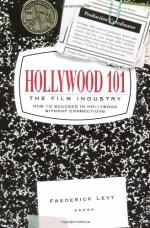|
This section contains 523 words (approx. 2 pages at 300 words per page) |

|
One of many amusements in the 1900s, movies began to compete seriously with books and magazines for people's leisure time in the 1910s. By 1916, twenty-five million Americans attended a movie every single day. Advances in technology and in the art of filmmaking helped make movies such an important part of American popular culture. Technologically, films could now be longer and could be shown on a bigger screen. Artistically, directors had developed the art of telling a story on film. They used rising "stars"—actors and actresses loved by their audience—to craft dramatic stories.
Nickelodeons, which showed short, one-reel films (films that fit on a single reel and were generally ten to twelve minutes long) in cramped spaces, faded in popularity during this decade. Soon the little nickelodeons were replaced by large, ornate theaters in many big cities. These "movie palaces," which seated hundreds...
|
This section contains 523 words (approx. 2 pages at 300 words per page) |

|



